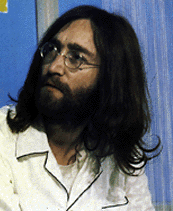




ESSAY I: HISTORY OF YOURSELF AS A WRITER
|
|
|
|
|
| Essay I Asssignment Sequence | ||
| Date | Homework Due | In-Class Work |
| Day 1 7/10 | Take validation tests. Introduce each other. Begin Essay I. | |
| Day 2 7/11 | Bring materials that will become part of the narrative of Essay I. Write first draft of Essay I. Read Goldberg excerpt (handout). | Find a pattern, organize material to tell a story that has an idea. Begin Essay II by placing it in the context of the gender theme for the summer. |
| Day 3 7/13 | Final draft of Essay I, with previous draft and new metatext; bring printout. Read "Two Kinds" in Speculations (p. 9). Identify four or five critical parts of the story and develop a theory about how they work to convey an idea. | Discuss "Two Kinds" in relation to Essay I. Start Essay II. Discuss and practice invention strategies. Share stories. |
One key to a good memoir is lots of interesting details. Of course, you're all relatively young writers, but you've nevertheless had years of experience writing, either in school, in journals, or over the internet. So you should be able to come up with lots of material to write a brief memoir of yourself as a writer, even if you don't write something as extensive as Francine duPlessy Gray's piece. Also, you may check out this student example; note especially the thoughtful metatext.
During this first essay, you'll start articulating what process you go through to write. Although each of us finds a somewhat different process there are many aspects of the writing process that we all go through, in one way or another.
For Essay I, you'll be focusing especially on the following: collecting evidence, freewriting, brainstorming, idea as an act of discovery, clustering, organizing evidence to communicate an idea, drafting, revising, metatext, title. Each highlighted concept links you to a student example.
Requirements:
+ Tell the story of yourself as a writer.
+ Use the evidence of your memory and previous writings.
+ Pull the reader into your memoir.
+ Leave the reader with some idea of your identity as a writer
through the details in your evidence.
+ 2-3 pages, double-spaced, with metatext, following MLA style (see p. 120 in The
Bedford Handbook)